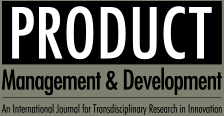Utilizing transdisciplinary project-based learning in undergraduate engineering education
Lacey M. Davis; Barrett S. Caldwell
Abstract
Transdisciplinary project-based learning is an opportunity for undergraduate engineering students to acquire valuable skills in translating individual knowledge to other disciplines and interacting with non-academic stakeholders. In the authors’ project-based education experience, these skills have been developed in both course-based and co-curricular learning contexts. A necessary foundation for implementing transdisciplinary projects in education includes introducing students to constructive collaboration across engineering disciplines and with stakeholders, consumers, and users. Furthermore, students must engage problem-solving techniques that account for emergent system behaviors during project development. Emergent behaviors are inherent to complex real-world problems. Engineering students benefit from the opportunity to respond to evolving project requirements and goals in low-risk, academic settings prior to enduring these challenges at the career level. This active learning approach can increase student agency and diversity as students work in multi-disciplinary teams on relevant problems, drawing from previous experiences. Additionally, students learn the value of qualitative data for characterizing priorities of stakeholders, consumers, and users that are often unavailable from quantitative data. Students participating in transdisciplinary project-based learning gain agency and develop a skillset for investigating the cross disciplinary implications and sociotechnical contexts of real world problems, as well as integrating quantitative engineering analyses with qualitative stakeholder needs.
Keywords
References
ABET. (2022). Criteria for accrediting engineering programs, 2022-2023. Retrieved in 2022, March 18, from https://www.abet.org/accreditation/accreditation-criteria/criteria-for-accrediting-engineering-programs-2022-2023/
Ballon, M. (2021). A new dawn. School of Engineering, USC Viterbi. Retrieved in 2022, March 18, from https://viterbischool.usc.edu/news/2019/04/a-new-dawn/
Crawley, E., Malmqvist, J., Ostlund, S., & Brodeur, D. (2007). Rethinking engineering education: the CDIO approach. Springer.
European Consortium of Innovative Universities – ECIU. (2022a). About ECIU. Retrieved in 2022, March 18, from https://www.eciu.org/about-eciu#about-eciu-university
European Consortium of Innovative Universities – ECIU. (2022b). ECIU challenges. Retrieved in 2022, March 18, from https://challenges.eciu.org/challenges/?university=linkoping-university
European Consortium of Innovative Universities – ECIU. (2022c). inGenious. Retrieved in 2022, March 18, from https://www.in-genious.eu/about-this-portal/
Fisher, D., & Frey, N. (2010). Guided instruction: how to develop confident and successful learners. ASCD.
Kokotsaki, D., Menzies, V., & Wiggins, A. (2016). Project-based learning: a review of the literature. Improving Schools, 19(3), 267-277. http://dx.doi.org/10.1177/1365480216659733.
Linköping University. (2022). InGenious - Cross Disciplinary Project. Retrieved in 2022, March 18, from https://liu.se/en/education/course/799g52
Lynch, M. (2017). STEM education is about hands on experiences. The Edvocate. Retrieved in 2022, March 18, from https://www.theedadvocate.org/stem-education-hands-experiences/
Murray, J., Cuen Paxson, L., Seo, S., & Beattie, M. 2020, Stem-Oriented Alliance for Research (SOAR): an educational model for Interdisciplinary Project-Based Learning. In ASEE Virtual Annual Conference Content Access Proceedings. Washington: ASEE. https://doi.org/10.18260/1-2–35206.
Nelson, L. (2012). Scaffolding undergraduate engineering design education with the wellbeing framework. West Lafayette: Purdue University. Retrieved in 2022, March 18, from http://docs.lib.purdue.edu/enegs/39
Rodríguez, J., Laverón-Simavilla, A., del Cura, J. M., Ezquerro, J. M., Lapuerta, V., & Cordero-Gracia, M. (2015). Project based learning experiences in the space engineering education at Technical University of Madrid. Advances in Space Research, 56(7), 1319-1330. http://dx.doi.org/10.1016/j.asr.2015.07.003.
Rogers, E. (2003). Diffusion of innovations (5th ed., pp. 1-199). New York: Free Press.
Rouse, W. (1991). Design for success: a human centered approach to designing successful products of systems. New York: Wiley.
Ryan, R., Marais, E., Balhatchet, C., & Eastham, S. (2022). Impact of rocket launch and space debris air pollutant emissions on stratospheric ozone and climate change. Earth’s Future, 10(6), e2021EF002612. http://dx.doi.org/10.1029/2021EF002612.
University of Texas at El Paso. (2022). UTEP Faculty LED Programs. Retrieved in 2022, March 18, from https://www.utep.edu/engineering/global%20programs/Faculty-Led%20Programs.html
Vygotsky, L. S. (1978). Mind in society. Cambridge: Harvard University Press.
Wickerson, G. (2022). The culture of engineering overlooks the people it's supposed to serve. Massachusetts Digital News. Retrieved in 2022, March 18, from https://massachusettsdigitalnews.com/the-culture-of-engineering-overlooks-the-people-its-supposed-to-serve/
Wognum, N., Bil, C., Elghc, F., Peruzzini, M., Stjepandić, J., & Verhagen, W. (2018). Trandisciplinary engineering research challenges, transdisciplinary engineering methods for social innovation of Industry 4.0. Amsterdam: IOS Press. https://doi.org/10.3233/978-1-61499-898-3-753.
Xu, Y. J. (2016). The experience and persistence of college students in STEM majors. Journal of College Student Retention, 19(4), 413-432. http://dx.doi.org/10.1177/1521025116638344.
Submitted date:
03/21/2023
Accepted date:
07/26/2023

